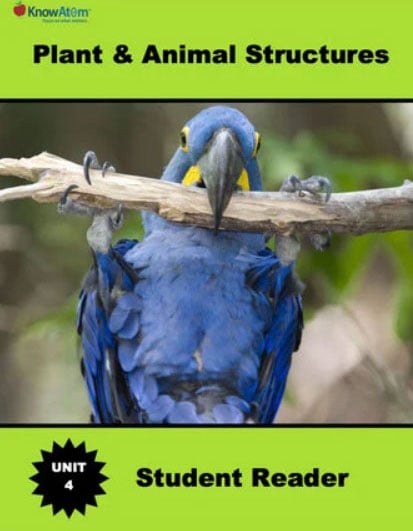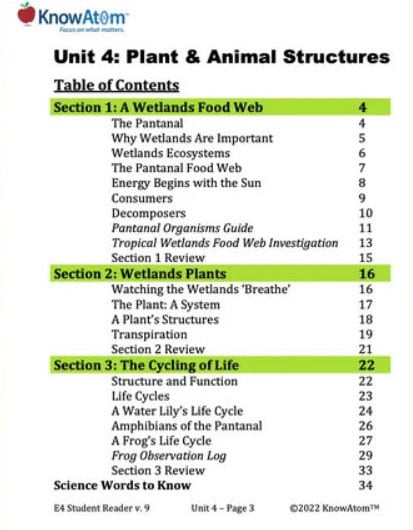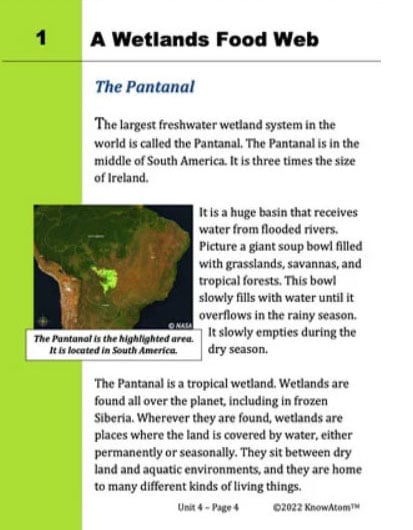Amphibians of the Pantanal
Some organisms have life cycles that are connected to the cycling wet and dry seasons in the Pantanal. For example, during the rainy season, many different kinds of amphibians grow in the wetlands environment. Amphibians are animals such as frogs, toads, and salamanders. They live the first part of their life in the water and the last part of their life on land.
There are at least 40 different kinds of amphibians in the Pantanal, including the South American horned frog. This frog has a powerful, sticky tongue that can catch prey up to half of its body size, including insects, fish, and other amphibians.
The South American horned frog is found in wetlands because it survives in shallow water, as well as moist soil.
A Frog’s Life Cycle
The South American horned frog, like all amphibians, changes its entire body during its life cycle. To change means to make something different from what it is now. This change from an immature form to an adult form is called metamorphosis. The frog’s internal and external structures change to help it survive in its environment.
An adult female frog can lay hundreds of eggs in the water. Frog eggs are also called embryos. They are surrounded by a jelly-like fluid and are food for many predators. Laying large numbers of eggs means that at least a few will survive.
Once the eggs hatch, they turn into tadpoles. Tadpoles are fish-like creatures that breathe underwater using gills and their skin. They grow tails, which they use to swim. They also develop a mouth, which they use to eat algae. Most tadpoles are herbivores, eating only plant matter. Internally, they have a long intestine but no stomach for digesting food.
Those tadpoles that aren’t eaten by other animals begin a complete transformation. During this stage, they are called froglets. Some body parts disappear. Other body parts are formed. For example, tadpoles begin to lose their tail and to grow legs. They begin to breathe on land as skin grows over the gills and lungs develop. A froglet has tiny teeth that help it eat. With enough energy and nutrients, the froglet will turn into an adult frog. Adult frogs lose their tail and develop a full set of lungs, as well as powerful back legs. This means they can spend most of their time on land. A frog can go in the water, but it needs to hold its breath to swim. Frogs also have large, bulging eyes.
Adult frogs are carnivores. They eat mostly insects. Because of this, the adult frog develops a larger mouth with a strong, wide jaw, teeth, and a tongue for capturing insects. The long intestine of the tadpole decreases in size and a stomach forms. After a year or so, adult frogs return to the water to lay eggs, starting the life cycle over again.










